Pilot sites
REFUGE-ED will carry out 46 pilots in 6 countries reaching out to more than 10 000 people.
Italy, Greece, Ireland, Sweden, Bulgaria, and Spain have been strategically chosen to achieve diversity in the context of migration and the situation of the refugee children.
Bulgaria, Italy, Greece, and Spain are key entry countries into the EU and are often considered transit countries on a journey towards northern and western Europe.
Sweden and Ireland are considered destination countries and have different integration strategies in place.
| Title | Address | Description |
|---|---|---|
Pilot sites in Bulgaria | Sofia, Bulgarien | |
| Greece | ||
| Ireland | ||
| Malmö, Sweden | ||
| Bulgaria | ||
Spain | Spain |
Three types of settings for pilot studies
Reception and identification centres
Reception and identification centres, refugee camps host refugee and asylum seeker families and children on a temporary basis. Educational arrangements are non-formal and transitory.
Inclusive school environments, and social and learning environments.
Pilot actions will be carried out in inclusive schools of formal education, and other non-formal or informal social and learning environments, serving migrant and non-migrant students and families. This pilot will involve a total of 18 schools/high schools, one Centre for Adult Education, one inner city community group and one intercultural centre.
Institutionalized residential care targeted to unaccompanied minors and separated children
The third type of pilots will be developed in residential care centres for the guardianship of unaccompanied minors and separated children. These educational arrangements are non-formal. They become key spaces for these children’s wellbeing, educational opportunities and sense of belonging.
Bulgaria
Bulgaria is a transit country for many asylum seekers and unaccompanied minors but some refugee families have decided to settle in the country. There is already an interesting experience in various educational practices for migrant and refugee children, as well as a need to apply innovative approaches.
In Sofia, the REFUGE-ED project is being implemented in two safe zones for unaccompanied minors in reception and registration centres and in three public schools with experience in educating students with diverse backgrounds, including Roma and refugees. In these schools the teachers are sensitive to intercultural issues and psychological problems related to migration.
Pilot schools collaborate closely with reception and registration centres, managed by the State Agency for Refugees, other government institutions, NGOs, and international organisations in a variety of activities, such as coordination of the refugee children’s enrolment and continuous communication on the educational and adaptational status of students, training of teachers, active participation and informational activities for the school pupils, intercultural, humanitarian and other activities.
Project partner
15th School 'Adam Mitskevich'
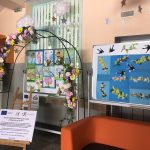 The 15th “Adam Mitskevich” school is a municipal public non-specialized school in Sofia, Bulgaria providing education for pupils from 1st to 12th grade. The school was established in 1950 as a girls’ school and five years later was transformed to mixed one. Nowadays the school has more than 500 students enrolled. The school has a rich history in terms of providing education for students of diverse ethnic and cultural backgrounds and, currently, has pupils from Iran, Iraq, Lebanon, Syria, Egypt, Vietnam, China, Afghanistan, Georgia, as well as children from the Roma community in the “Nadezhda” district and coming from crisis centers.
The 15th “Adam Mitskevich” school is a municipal public non-specialized school in Sofia, Bulgaria providing education for pupils from 1st to 12th grade. The school was established in 1950 as a girls’ school and five years later was transformed to mixed one. Nowadays the school has more than 500 students enrolled. The school has a rich history in terms of providing education for students of diverse ethnic and cultural backgrounds and, currently, has pupils from Iran, Iraq, Lebanon, Syria, Egypt, Vietnam, China, Afghanistan, Georgia, as well as children from the Roma community in the “Nadezhda” district and coming from crisis centers.
66th School "Filip Stanislavov
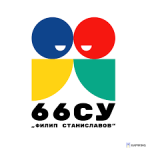 The 66th ‘Filip Stanislavov’ school is a municipal public school in Sofia, Bulgaria that provides education for students from 1st to 12th grade. Currently the school has about 350 students. 35% of the students are Roma and there are 20 unaccompanied minors from Syria enrolled in the school. The educational institution used to have around 700 students each year, but their number dropped in the 2000s when the school launched a Roma integration program. The school has been presented in the media as a ‘school which is not afraid of the refugee-students’ because and one that ‘sets an example in tolerance and respect, and educates its students in the spirit of these values’
The 66th ‘Filip Stanislavov’ school is a municipal public school in Sofia, Bulgaria that provides education for students from 1st to 12th grade. Currently the school has about 350 students. 35% of the students are Roma and there are 20 unaccompanied minors from Syria enrolled in the school. The educational institution used to have around 700 students each year, but their number dropped in the 2000s when the school launched a Roma integration program. The school has been presented in the media as a ‘school which is not afraid of the refugee-students’ because and one that ‘sets an example in tolerance and respect, and educates its students in the spirit of these values’
74th School 'Gotse Delchev'
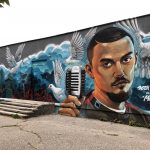 The 74th ‘Gotse Delchev’ school is a municipal public school in Sofia, Bulgaria providing education from 1st to 12th grade. There are a total of 65 teachers and a pedagogical staff including two psychologists, three speech therapists, two resource teachers and a teacher – pedagogical consultant. During the school year 2020/2021, around 750 students were enrolled. Their background is diverse in terms of ethnicity (Bulgarians, Roma, migrants from Vietnam, Bangladesh China). There have been refugee children previously enrolled in the school but many of them have opted to be reunited with their families outside of Bulgaria and haven’t managed to finish the school year.
The 74th ‘Gotse Delchev’ school is a municipal public school in Sofia, Bulgaria providing education from 1st to 12th grade. There are a total of 65 teachers and a pedagogical staff including two psychologists, three speech therapists, two resource teachers and a teacher – pedagogical consultant. During the school year 2020/2021, around 750 students were enrolled. Their background is diverse in terms of ethnicity (Bulgarians, Roma, migrants from Vietnam, Bangladesh China). There have been refugee children previously enrolled in the school but many of them have opted to be reunited with their families outside of Bulgaria and haven’t managed to finish the school year.
Registration and Reception Center in Sofia – Voenna Rampa
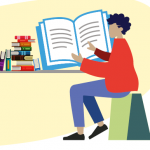 Registration and Reception Center in Sofia – Voenna Rampa (RRC Voenna Rampa) is a refugee site, one of three Registration and Reception Centers in Sofia, managed by the State Agency for Refugees (SAR). RRC Voenna Rampa includes a Safety Zone for unaccompanied minors (UAM) established in 2019 and operated by IOM. The total accommodation capacity of the center is 800 asylum seekers. RRC Voenna Rampa accommodates asylum seekers from Afghanistan, Pakistan, and Iran mainly. The majority of asylum seekers accommodated in the RRC are from Afghanistan. SAR, CARITAS, CRW and IOM regularly organize different arts and crafts workshops in the center.
Registration and Reception Center in Sofia – Voenna Rampa (RRC Voenna Rampa) is a refugee site, one of three Registration and Reception Centers in Sofia, managed by the State Agency for Refugees (SAR). RRC Voenna Rampa includes a Safety Zone for unaccompanied minors (UAM) established in 2019 and operated by IOM. The total accommodation capacity of the center is 800 asylum seekers. RRC Voenna Rampa accommodates asylum seekers from Afghanistan, Pakistan, and Iran mainly. The majority of asylum seekers accommodated in the RRC are from Afghanistan. SAR, CARITAS, CRW and IOM regularly organize different arts and crafts workshops in the center.
Registration and Reception Center in Sofia – Ovcha Kupel
Registration and Reception Center in Sofia – Ovcha Kupel (RRC Sofia – Ovcha Kupel) is a refugee site, one of three RRCs in Sofia, managed by the State Agency for Refugees (SAR). RRC Voenna Rampa includes a Safety Zone for unaccompanied minors (UAM) opened in 2020 and operated by IOM. The center has a total accommodation capacity of 860 asylum seekers. RRC Ovcha Kupel accommodates asylum seekers from Syria, Iraq, North Africa, and other countries where the spoken language is Arabic or Kurdish, as well as Sub-Saharan Africa. The majority of those accommodated currently are from Syria.
Ireland
Traditionally, Ireland has been seen as a source of emigrants, not a destination for forced migrants. However, 2021 saw 2649 individuals – from countries such as Nigeria, Georgia, Somalia, Afghanistan and Zimbabwe – apply for international protection here. A quarter of this group was made up of children travelling with their families, while a further 53 young people arrived here unaccompanied. By the end of 2021, almost 95% of these people had permission to remain in Ireland. The easing of covid-19 restrictions, rise of the Taliban in Afghanistan, and Russia’s invasion of Ukraine all mean that rates of applicants for international protection in 2022 continue to climb.
Upon arrival in Ireland, school is often one of the earliest entry points for young people into Irish society. Schools can play a crucial role in helping children acclimatise to a new culture, restoring a sense of predictability to life, as well as providing opportunities to rebuild social connections. But, in the absence of appropriate supports, schools can also intensify experiences of exclusion, marginalisation, and pressure to assimilate. In Ireland, we are collaborating with a small school named Joey’s in the Dublin’s inner city. Joey’s is made up of boys aged between 7 and 12 years from diverse backgrounds. The state recognises that Joey’s community faces various educational disadvantages and so provides supports like a home school community liaison service, a school meals programme, and planning supports. The staff at Joey’s are dedicated to giving their students the best possible start in their education, and see their student body as potential leaders of the future, whom they hope to teach to care for themselves, each other, and the environment. Our work with Joey’s is intended to support this mission.
Project partner
St. Josephs CBS Primary School (Joey's)
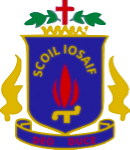 Joey’s is made up of boys aged between 7 and 12 years from diverse backgrounds. The state recognises that Joey’s community faces various educational disadvantages and so provides supports like a home school community liaison service, a school meals programme, and planning supports. The staff at Joey’s are dedicated to giving their students the best possible start in their education, and see their student body as potential leaders of the future, whom they hope to teach to care for themselves, each other, and the environment. Our work with Joey’s is intended to support this mission. [please note this text is taken from the word file ‘short text about your pilot’]
Joey’s is made up of boys aged between 7 and 12 years from diverse backgrounds. The state recognises that Joey’s community faces various educational disadvantages and so provides supports like a home school community liaison service, a school meals programme, and planning supports. The staff at Joey’s are dedicated to giving their students the best possible start in their education, and see their student body as potential leaders of the future, whom they hope to teach to care for themselves, each other, and the environment. Our work with Joey’s is intended to support this mission. [please note this text is taken from the word file ‘short text about your pilot’]
Italy
Project partner
Casa di Giuseppe, managed by Fo.Co.
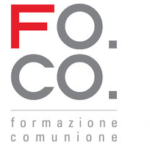 “Casa di Giuseppe” is a center for unaccompanied male-only minors in Vittoria (Ragusa). The center is managed by “Fo.Co.” and it currently counts 11 minors from Gambia, Guinea, Mali, Bangladesh, Egypt aged 16-17 years old. “Fo.Co.” provides language mediation, social and legal services, accommodation, psychosocial support, etc. “Casa di Giuseppe” is organized as a shared apartment where minors live almost autonomously. If the minor is under 16, he is enrolled in public school. If he is over 16, he attends Italian language classes at the centre. The staff is made of 3 educators/social workers, 3 language/cultural mediators, 2 Italian teachers, 1 administration expert and 1 coordinator.
“Casa di Giuseppe” is a center for unaccompanied male-only minors in Vittoria (Ragusa). The center is managed by “Fo.Co.” and it currently counts 11 minors from Gambia, Guinea, Mali, Bangladesh, Egypt aged 16-17 years old. “Fo.Co.” provides language mediation, social and legal services, accommodation, psychosocial support, etc. “Casa di Giuseppe” is organized as a shared apartment where minors live almost autonomously. If the minor is under 16, he is enrolled in public school. If he is over 16, he attends Italian language classes at the centre. The staff is made of 3 educators/social workers, 3 language/cultural mediators, 2 Italian teachers, 1 administration expert and 1 coordinator.
IC Vittoria Colonna – 1st Grade Secondary School, part of Giovanni XXIII-Vittoria Colonna Institute [Istituto Comprensivo]
The school has a total of 422 students, out of which 42 are of migratory background. Students are grouped in 24 classes, with 3 to 4 students with migratory background per class. The main nationalities are Tunisians, Moroccans, Albanians, Romanians, few Chinese and one Greek. Most of them were born in Vittoria. The socio-economic background of students is various, with many coming from disadvantaged conditions. The number of minors with migratory background has been increasing, thus making the school in need of identifying and applying good practices and strategies to manage multi-cultural classes.
“Acate Centrale” and “Addario” - Primary school. Part of “Capitano Biagio Puglisi” Institute [Istituto Comprensivo]
The Acate Centrale and Addario Primary school has a total of 503 students (grouped in 24 classes), out of which 69 are of migratory background. The school specifically organizes Italian language classes, school support, and literacy activities for migrant students. Moreover, the school applies the “Welcome protocol”: once a student arrives there is a screening with teachers and parents, aimed at analyzing documents from the country of origin and the level of language. After the screening, a Personalized transitional plan of education is prepared and implemented until the student reaches a good level of Italian.
A. Volta – 1st grade Secondary School, part of Capitano Biagio Puglisi Institute [Istituto Comprensivo]
The A. Volta 1st grade Secondary school has a total of 298 students, out of which 39 are of migratory background. Students are grouped in 13 classes, with on average 6/7 foreign students out of 22/24 per class. There are 29 teachers, and 1 additional teacher who organises Italian language classes and school support for students with migratory background. The city of Acate counts 10.954 inhabitants, of which 32,6% come from other countries. Of the registered migrants and refugees, 22% are minors. Romanian, Tunisian and Moroccan are the main nationalities. Acate is also characterised by social and geographical fragmentation among nationalities.
“Arcobaleno” Community, managed by "Idee in Movimento"
 The Arcobaleno Community is located in the VIII District of Palermo, one of the districts with the highest number of migrants: 6.960, equal to 23.4% of the entire foreign population in Palermo. The main foreign communities in this area are Romanian and Filipinos. The Arcobaleno Community provides socio-psychological, health, and legal support; language mediation; counselling; regularization of the minors’ legal status; leisure activities. The Arcobaleno community is organized in two apartments, located in two different areas of Palermo, and accommodates 10 male unaccompanied minors aged between 15 and 17 years old, and newly 18 years old.
The Arcobaleno Community is located in the VIII District of Palermo, one of the districts with the highest number of migrants: 6.960, equal to 23.4% of the entire foreign population in Palermo. The main foreign communities in this area are Romanian and Filipinos. The Arcobaleno Community provides socio-psychological, health, and legal support; language mediation; counselling; regularization of the minors’ legal status; leisure activities. The Arcobaleno community is organized in two apartments, located in two different areas of Palermo, and accommodates 10 male unaccompanied minors aged between 15 and 17 years old, and newly 18 years old.
CPIA Palermo 1 – Centre for adult education
 CPIA 1 is located in Palermo, where the foreign communities (3.9% of the total population) live in the city centre and neighbouring areas such as “Oreto” and “Zisa”. The CPIA is a public school established by the Italian Ministry of Education, University and Research, to offer education and Italian language courses to adults who did not complete mandatory school. CPIA Palermo 1 has 26 teachers and 50 foreign minors.
CPIA 1 is located in Palermo, where the foreign communities (3.9% of the total population) live in the city centre and neighbouring areas such as “Oreto” and “Zisa”. The CPIA is a public school established by the Italian Ministry of Education, University and Research, to offer education and Italian language courses to adults who did not complete mandatory school. CPIA Palermo 1 has 26 teachers and 50 foreign minors.
E. De Amicis – Primary School
The school is located in the district called “Noce”, economically developed with small enterprises. However, the economy of the area is not prosperous and the unemployment rate is high. Moreover, the level of literacy of people is minimum. People from Bangladesh are among the main foreign population in the area – they have been living here for more than 40 years old. The Primary school, founded in 1951, lacks adequate spaces for administrative activities, as well as educational ones (i.e. gym). The school has 105 students with migratory background, the majority are from Bangladesh and Ghana. Other nationalities are: Ivory Coast, Mauritius, Ecuador, Romania, and Morocco.
I.C.S. Silvio Boccone
The I.C.S. Silvio Boccone’s 1st grade Secondary School is in the Oreto-Stazione district, whose economy is linked to the market, shops, the railway station, and the hospital; however, many families (both locals and non-locals) live in precarious conditions. In addition, there is a high rate of criminality and not many green and public spaces. The population of this area has a high percentage of young families. The school is organised in 26 classrooms and has 65 teachers. It has a total of 26 students with migratory background, coming from Ghana, Ivory Coast, Tunisia, Ukraine, Bangladesh, and Romania. Some of them were born in Palermo.
Primary School “La Masa”, part of the Institute Comprensivo Politeama
The site is located in the VIII District of Palermo, which is among those with the highest number of citizens of foreign origin. The district has both well-off neighbourhoods, like the Politeama theatre, as well as poor and precarious ones, such as Borgo Vecchio. The largest foreign communities in this area are Romanian and Filipinos. The whole Politeama Institute provides education for a total of 1047 students, out of which 188 are with migratory background (18%). The “La Masa” site, counts a total of 44 students with migratory background, the main nationality being Bangladesh (20).
1st grade Secondary School “Archimede”, part of the Institute Comprensivo Politeama
The school is located in the VIII District of Palermo, specifically in the Borgo Vecchio area, where there are high unemployment and criminality rates. The area is characterized by few green areas and low offer of leisure, cultural, and sport activities (those available are expensive and their high costs cannot be sustained by the families). The literacy level of both local and foreign families is very low. The largest foreign communities in this area are Romanian and Filipinos. The site counts 6 classes and a total of 24 students with migratory background, mainly from Bangladesh (9).
IISS Francesco Ferrara – 2nd grade Secondary School
The IISS Francesco Ferrara, a 2nd grade Secondary public school, is in the historical Tribunali-Castellammare District of Palermo. This area, which was underdeveloped until a few years ago, is now economically revitalized thanks to tourism, culture, and public administration offices. The school is destined to students aged 15-18 years old, but it also provides evening courses for adults. Given its geographical position, the school has a high percentage of students with migratory background (150 students out of 555). The main nationalities are Bengalese, Ghanaian, Ivorian, Sri Lanka. Once a week an external team of language and cultural mediators offers support to migrants.
IISS Pietro Piazza – 2nd grade Secondary School
The IISS Pietro Piazza, a 2nd grade Secondary public school, is in the Oreto-Stazione district. The school is close to Brancaccio, the main industrial area of Palermo. Despite this, many families (both local and non-local) live in precarious conditions. The area is also characterised by a high rate of criminality and a high percentage of young families. The district is among those with the largest presence of migrants, presence which has increased in the last decade. The school counts 2299 students in total, organized in 114 classrooms, and about 150 foreign-born students from Bangladesh, China, Tunisia, Morocco, Ghana, and various sub-Saharan countries.
1st grade Secondary School “Federico II” of IC Politeama
The school is located in the VIII District of Palermo, specifically in the Borgo Vecchio area, where there are high unemployment and high crime rates. The area is characterized by little green areas, and low offer of leisure, culture and sport activities, while those available are expensive with high costs that cannot be sustained by the families. The literacy level of the family, both local and foreign, is mainly at minimum, (1st grade Secondary School).
The most relevant foreign communities in this area are Romanian and Filipinos. The district has both well-off neighborhoods, like the commercial area of the Politeama theatre, as well as poor and precarious ones, like Borgo Vecchio, where there are high unemployment and high crime rates. The area is characterized by little green areas, and low offer of leisure, culture and sport activities, while those available are expensive with high costs that cannot be sustained by the families. The literacy level of the family, both local and foreign, is mainly at minimum, (1st grade Secondary School).
Centro Freedom Center for Unaccompanied Minors (SAI)
The Freedom community is located in the municipality of Trabia, in the province of Palermo. Precisely, it is 30 km away from Palermo and 5 km away from the closest big city called Termini Imerese. Trabia is a small town, with 10.279 inhabitants, and its economy is mainly devoted to tourism, thanks to its geographical location on the seaside. The town, in fact, is quite calm during winter, while during summer it becomes full of tourists. The town is also well connected with the main neighborhood cities and towns, including Palermo, thanks to the railway.
Spain
There are 14 different pilot sites in Spain covering a wide range of educational services. Some are traditional schools, others are have been working with succesful educational actions for while and are transitioning into learning communities.
Three of the pilot sites are residential care facilities for unaccompanied minors and separated children. These sites are not mentioned in the list below for reasons of confidentiality.
Project partner
Fundación CEPAIM
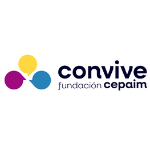 CEPAIM is a fundation which offers attention services to vulnerable capes of society. CEPAIM offers reception and general information services, administrative support, training, employment and housing services, attention to the youth and families, and development cooperation services. One of their main tasks is to give reinforcement lessons to students of different schools, while promote safe learning spaces and integrative and supportive communities.
CEPAIM is a fundation which offers attention services to vulnerable capes of society. CEPAIM offers reception and general information services, administrative support, training, employment and housing services, attention to the youth and families, and development cooperation services. One of their main tasks is to give reinforcement lessons to students of different schools, while promote safe learning spaces and integrative and supportive communities.
Eibar BHI
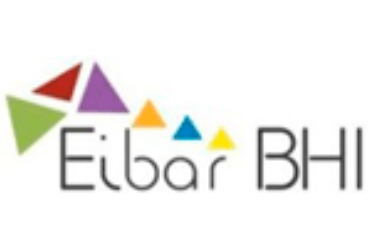 Eibar BHI is a public high school in the town of Eibar. It is a Learning Community characterised by being plural, bilingual and innovative. Their goal is to meet the needs of Basque society as well as attend to diversity by balancing existing differences. To offer students of different origins, cultures, abilities, sensitivities a comprehensive education that allows them to become autonomous, critical and committed adults, capable of coping correctly through their lifetime.
Eibar BHI is a public high school in the town of Eibar. It is a Learning Community characterised by being plural, bilingual and innovative. Their goal is to meet the needs of Basque society as well as attend to diversity by balancing existing differences. To offer students of different origins, cultures, abilities, sensitivities a comprehensive education that allows them to become autonomous, critical and committed adults, capable of coping correctly through their lifetime.
IES Veles e Vents
Veles e Vents is a large public high school in Gandia which also offers vocational training courses and has more than one thousand students. They have long been a Learning Community and have experience in implementing successful educational actions as interactive groups, dialogical gatherings, and educational participation of the community.
IES Alfonso II
Alfonso II is a large public higschool located in Oviedo. Three years ago Alfonso II became a Learning Community and have been implementing some SEAs. Their view is that “every day, every pass, every good grade, every gesture of nobility, solidarity and kindness of our students, becomes a success for all of us, an anchor for our profession and a sail that unfurls towards a better future”.
CEIP Sant Vicent Ferrer
 Sant Vicent Ferrer is a primary public school located in Llíria, which has long been a Learning Community. The school values are education as a priority, integral education, the students as main characters of their learning process, the development of intra and interpersonal aspects, the promotion of democracy, colaborative work, inclusive school, constant improvement and innovation, open and welcoming school, and coeducation.
Sant Vicent Ferrer is a primary public school located in Llíria, which has long been a Learning Community. The school values are education as a priority, integral education, the students as main characters of their learning process, the development of intra and interpersonal aspects, the promotion of democracy, colaborative work, inclusive school, constant improvement and innovation, open and welcoming school, and coeducation.
IPI Karmengo Ama
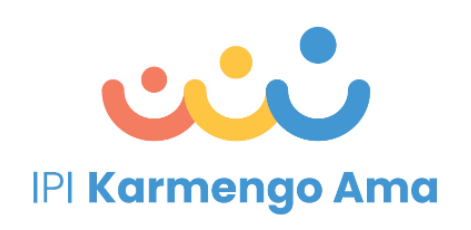 Karmengo Ama is a public primary and secondary school in the town of Pasaia. Karmengo Ama is a Learning Community that works on many projects where the whole educational community is involved. Many projects are going on, such as reading in pairs, cooperative carnival week, different Dialogical Gatherings and others.
Karmengo Ama is a public primary and secondary school in the town of Pasaia. Karmengo Ama is a Learning Community that works on many projects where the whole educational community is involved. Many projects are going on, such as reading in pairs, cooperative carnival week, different Dialogical Gatherings and others.
CP Martina Garcia
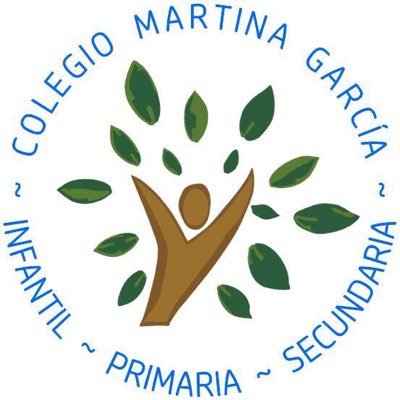 Martina Garcia is a public primary and high school in Fuente el Saz de Jarama. It is a bilingual school. It carries out projects as Interactive Groups and Dialogical Gatherings, digital projects, and it has a highly innovative techological classroom. Their values are the quality, equality, effort, creative capacities, critical spirit, psicological atention and orientation, active and participative metodology, environment respect, and pedagogical autonomy.
Martina Garcia is a public primary and high school in Fuente el Saz de Jarama. It is a bilingual school. It carries out projects as Interactive Groups and Dialogical Gatherings, digital projects, and it has a highly innovative techological classroom. Their values are the quality, equality, effort, creative capacities, critical spirit, psicological atention and orientation, active and participative metodology, environment respect, and pedagogical autonomy.
CEIP República de Venezuela
 República de Venezuela is a primary public school in Madrid. It is a Learning Community and it intends to promote the autonomy of their students by enhancing their self-esteem while establishing relationships between them based on solidarity, tolerance and problem solving through dialogue. It pretends to respond to the needs and characteristics of the environment attending the concerns and demands that families, teachers and other professionals raise from an open vision of models based on inclusion and dialogue.
República de Venezuela is a primary public school in Madrid. It is a Learning Community and it intends to promote the autonomy of their students by enhancing their self-esteem while establishing relationships between them based on solidarity, tolerance and problem solving through dialogue. It pretends to respond to the needs and characteristics of the environment attending the concerns and demands that families, teachers and other professionals raise from an open vision of models based on inclusion and dialogue.
Escola Sant Bernat Calbó
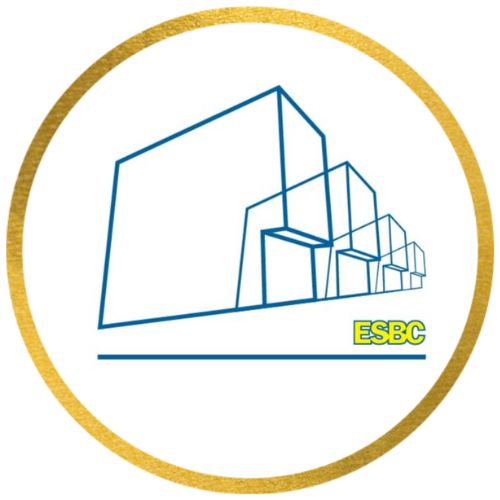 Bernat Calvó is a public primary school in the city of Reus. It is starting to develope training on Successful Educational Actions. The school gives importance to socioemocional education, to the participation of families, students and external associations in the center and the educative and coexistance desitions and to being a safe learning environtment trough mediation and the positive conflict management and resolution.
Bernat Calvó is a public primary school in the city of Reus. It is starting to develope training on Successful Educational Actions. The school gives importance to socioemocional education, to the participation of families, students and external associations in the center and the educative and coexistance desitions and to being a safe learning environtment trough mediation and the positive conflict management and resolution.
Aranbizkarra Ikas Komunitatea
 Aranbinzkarra is a Learning Community public primary school. This means that ir is a project based on a set of successful educational actions aimed at social and educational transformation. The fundamental objectives are the improvement of coexistence and the achievement of school success for all. For the school, learning in interacion and the participation of all people is essential in our school, families, former students, volunteers, interns, neighborhood agents are key aspects of their learning model.
Aranbinzkarra is a Learning Community public primary school. This means that ir is a project based on a set of successful educational actions aimed at social and educational transformation. The fundamental objectives are the improvement of coexistence and the achievement of school success for all. For the school, learning in interacion and the participation of all people is essential in our school, families, former students, volunteers, interns, neighborhood agents are key aspects of their learning model.
Alt Camp - Centre de menors no acompanyats 1 - Catalunya
Institutionalized residential care targeted to unaccompanied minors and separated children (NFE)
Conca de Barberà - Centre de menors no acompanyats 1 - Catalunya
Institutionalized residential care targeted to unaccompanied minors and separated children (NFE)
Tarragona - Centre de menors no acompanyats 1 - Catalunya
Institutionalized residential care targeted to unaccompanied minors and separated children (NFE)
Sweden
Save the Children Sweden and Support Group Network will be conducting pilot actions with two non-formal educational settings.
Project partners
Vänersborg Interkulturelt Centrum
Vänersborg Interkulturelt Centrum is platform that brings together cultural activities to promote interculture and develop a model for strategic work that enables and ensures meaningful and sustainable integration work in Vänersborg municipality.
Support Group Network programs and activities are divided into social inclusion and labour market inclusion. Examples of activities that promote social integration is meeting place and cultural café, activities for children, young people, women and adults, cultural exhibitions, cultural parties, lectures, and workshops.
In addition, other organizations have the opportunity also conduct seminar, conferences, parties, meetings. Also, groups and people who have a creative idea related to social inclusion and job market inclusion, we help them to make it happen.
Restad Gård asylum accomodation centre
Restad Gård is situated in the municipality of Vänersborg, where there is the Swedish Migration Agency provided accommodation for asylum seekers and running by a private company.
In the last few years, particularly since 2015 the facilities have housed a large number of asylum seekers, and became one of the largest asylum accommodations in Sweden. Nowadays, Restad Gård is housing more than 500 asylum seekers majorities are women and children from Afghanistan, Iran, Turkey, Iraq, Somalia, Eritrea and Ukraine refugees.
In this refugee camp, there are many civil society organizations is active, such as Support Group Network, Save the Children, Swedish Red Cross, and other organization which are providing recreational and non-formal education like Swedish language and society orientation.
Åby Mötesplats, Mölndal
Åby Mötesplats is a meeting center located in Mölndal in which Support Group Mölndal is running tutoring sessions every Saturday together with Save the Children Sweden. They are running classes in maths, robotics, Arabic, and English for children between 6-14. In the meeting center, we are implementing the following SEAs: Interactive Groups, Dialogic Literacy Gatherings, and Educative Participation of the Community. Soon we will also start with the implementation of MHPSS interventions within the activities.
Greece
Project partners
Karditsa Educational Center 1
The school is located in Karditsa, a city in western Thessaly in mainland Greece. The city of Karditsa is the capital of Karditsa municipal unit of region of Thessaly. The area of the municipal unit is 110.086 square kilometres. According to the 2011 census1, the municipality has a population of 56.747 -the city of Karditsa has 39.119 residents- out of which 3,43% are foreigners. The area’s employment rate is 34%, whilst 8,83% are job seekers. Regarding the residents’ educational level, 21,5% have completed secondary education and 19,63% have completed any type of tertiary education, while 27,51% have completed only primary education.
Karditsa is one of the most bicycle-friendly cities in Greece with an extensive network of bicycle paths. Approximately 30% of all the city transportation is done by bicycles. The city is also a holder of the “Cycle friendly Employer” issued by the European Cyclists’ Federation. Moreover, the city has a few historic football and basketball clubs among a wide range of sports clubs.
- Total number of students: 191
- Total number of teachers: 31
- Migrant/refugee children attending the school: 15 (Congo (9), Iraq (4), Kuwait (1), Syria (1)). Their age range is from 6 to 12 years old.
- Migrant/refugee children are allocated to the school by AN.KA – Development Agency of Karditsa.
- The socioeconomic background of the students and their families is middle to lower class.
- One social worker and one psychologist visits the school once a week.
- One reception class and one integration class operate in the school.
Nikaia - Agios Ioannis Rentis
The socio-economic and cultural conditions of the neighborhood/area in which is located (e.g., educational level, nationality, employment rate of the population living there) The school is located in the Municipality of Nikaia – Agios Ioannis Rentis of the regional unit of Piraeus in the Attica region. The area of the municipality is 11,173 square kilometres and its seat is Nikaia. According to the 2011 census1, the municipality has a population of 105,430 out of which 10,123 are foreigners. The area’s employment rate is 40,52%, whilst 8,03% are job seekers. Regarding the residents’ educational level, 28,59% have completed secondary education and 17,54% have completed any type of tertiary education. is 24,64%.
Karditsa Educational Center 2
The school is located in Karditsa, a city in western Thessaly in mainland Greece. The city of Karditsa is the capital of Karditsa municipal unit of region of Thessaly. The area of the municipal unit is 110.086 square kilometres. According to the 2011 census1, the municipality has a population of 56.747 -the city of Karditsa has 39.119 residents- out of which 3,43% are foreigners. The area’s employment rate is 34%, whilst 8,83% are job seekers. Regarding the residents’ educational level, 21,5% have completed secondary education and 19,63% have completed any type of tertiary education, while 27,51% have completed only primary education.
Karditsa is one of the most bicycle-friendly cities in Greece with an extensive network of bicycle paths. Approximately 30% of all the city transportation is done by bicycles. The city is also a holder of the “Cycle friendly Employer” issued by the European Cyclists’ Federation. Moreover, the city has a few historic football and basketball clubs among a wide range of sports clubs.
- Total number of students: 285
- Total number of teachers: 39
- Migrant/refugee children attending the school: 9 (Congo (7), Cameroun (2)). Their age range is from 12 to 15 years old.
- Migrant/refugee children are allocated to the school by AN.KA – Development Agency of Karditsa.
- The socioeconomic background of the students and their families is middle to lower class.
- One social worker and one psychologist visits the school once a week.
- One reception class and one integration class operate in the school.
Kypseli Educational Center
The school is located in Kipseli, a neighborhood in central Athens which occupies much of the 6th municipal department of the municipality of Athens. The area of the municipality is 38,96 square kilometres. According to the 2011 census, the municipality has a population of 664.064 -Kypseli has approximately 65.000 residents- out of which 25,16% are foreigners. The area’s employment rate is 42,16%, whilst 10,79% are job seekers. Regarding the residents’ educational level, 32,95% have completed secondary education and 28,27% have completed any type of tertiary education, while 15,94% have completed only primary education.
Athens is the capital and largest city of Greece, part of Attica region. Attica’s total population is almost 4 million. Kypseli is a multicultural area, with inhabitants from various nationalities including locals. It borders with Agios Panteleimonas and Patisia, areas widely inhabited by refugees and migrants.
- Total number of students: 210
- Total number of teachers: 20
- Migrant/refugee children attending the school: 152 (Albania (36), Romania (14), Afghanistan (14), Syria (13), Georgia (13), Nigeria (7), Bangladesh (7), Cameroun (7) Algeria (6), Pakistan (4), Philippines (4), Egypt (4). The rest are children that have not completed enrollment or have not attended classes for more than a month. Their age range is from 6 to 12 years old.
- Refugee children are allocated to the school by the focal point of the Municipality’s department of education in cooperation with the organisation handling the family’s accommodation scheme (i.e. IOM). Migrant children’s families mostly enroll them on their own.
- The socioeconomic background of the students and their families is middle to lower class.
- One social worker and one psychologist visits the school once a week.
- Two reception classes and one integration class operate in the school.
Sepolia Educational Center
The school is located in Sepolia, a neighborhood north of the center of Athens, Greece, that belongs to the 4th municipal department of the municipality of Athens. The area of the municipality of Athens is 38,96 square kilometers. According to the 2011 census, the municipality has a population of 664.064 -the 4th municipal department has approximately 85.000 residents- out of which 25,16% are foreigners. The area’s employment rate is 42,16%, whilst 10,79% are job seekers. Regarding the residents’ educational level, 32,95% have completed secondary education and 28,27% have completed any type of tertiary education, and 15,94% have completed only primary education.
Athens is the capital and largest city of Greece, part of the Attica region. Attica’s total population is almost 4 million. Sepolia is a multicultural area, with inhabitants from various nationalities including locals. It borders Agios Nikolaos, Kolonos, and Patisia, areas widely inhabited by refugees and migrants. The neighborhood’s historic football and basketball clubs have been always open to including all nationalities and cultural backgrounds.
- Total number of students: 277
- Total number of teachers: 38
- Migrant/refugee children attending the school: 156 (Albania (53), Romania (25), Georgia (13), Afghanistan (13), Egypt (10), Bulgaria (9), Bangladesh (7), Moldova (5), Ukraine (4), Iran (4), Pakistan (3), Senegal (2), Syria (2), Poland (2), Congo (1), Iraq (1), Turkey (1), Kenya (1)). Their age range is from 6 to 12 years old.
- Refugee children are allocated to the school by the focal point of the Municipality’s department of education in cooperation with the organisation handling the family’s accommodation scheme (i.e. IOM). Migrant children’s families mostly enroll them on their own.
- The socioeconomic background of the students and their families is middle to lower class.
- One social worker and one psychologist visit the school once a week.
- Two reception classes and one integration class operate in the school.
ANKA SA- Development Agency of Karditsa
ANKA has developed and is operating in the city of Karditsa, in central Greece. The Municipality of Karditsa has an area of 110.086 (one hundred ten thousand eighty-six) square Klm, and according to the 2011 census, it hosts 38.554 (thirty-eight thousand five hundred fifty-four) residents, who are mainly employed in trade and agricultural work.
Karditsa is considered to be one of the highest-income agricultural cities in Greece.
The main purpose of the identity of ANKA S.A. is the implementation of programs and projects. Through the programs and projects, the development of both rural and urban areas is sought by highlighting and utilizing all kinds of resources (natural, human, cultural), proposing as a driving force the local initiative and entrepreneurship.
The development concept of AN. KA SA focuses on “capacity building” and the “empowerment” of the local population, especially the disadvantaged groups as well as the avoidance of social exclusion. The programs and projects are designed and implemented to serve a coherent and integrated vision for local development. Each one meets specific needs and satisfies an individual goal of this vision, which is constantly updated and enriched through social consultation.
All of the above create an increased demand for planning, management, and operational adequacy, because, on the one hand, the programs must obey the strategies compiled by all local bodies (most of which are shareholders of AN.KA) and on the other hand, they must be in line with national and Community policies. To achieve the above, the Development of Karditsa has established a flexible team of experienced and specialized, in many different subjects, executives, with international experience and full complementarity, to offer integrated solutions and consulting services in the public, social and private sectors.
The result of all the above is the admittedly successful action of the company during the last twenty years. The permanent ambition of AN. KA SA is to be the most reliable and effective development mechanism at the disposal of local agencies and the residents of its intervention area.
2nd Elementary School of Pylaia
The school is located in the Municipal Unit of Pylaia, one of the 3 (three) Municipal Units of the Municipality of Pylaia- Hortiatis, in the city of Thessaloniki.
The area of the Municipal Unit is 26.362 (twenty six thousand three hundred sixty two) square kilometres and it is located in the Northern- Eastern side of the city. According to the 2011 census[1], Pylaia has a population of 34.625 (thirty four thousand six hundred twenty five), out of which, only 568 (five hundred sixty eight), ie 1,64% (one point sixty four) are foreigners.
The area’s employment rate is 40,21 %, (forty point twenty-one), whilst 12,37% (twelve point thirty-seven) are job seekers.
Regarding the residents’ educational level, 30,15% (thirty point fifteen) of the population are university degree holders, 23,64% (twenty-three point sixty-four) have completed secondary education and 10,50% (ten-point fifty) have completed elementary school.
Pylaia is mainly habituated by residents with moderate to high-income rates, and this is the reason it hosts so few people with a migrant background.
6th Multicultural Elementary School of Eleftherio- Kordelio
The school is located in the Municipal Unit of Eleftherio-Kordelio, one of the 2 (two) Municipal Units of the Municipality of Kordelio-Evosmos, in the city of Thessaloniki.
The area of the Municipal Unit is 926 (nine hundred twenty-six) acres/ 3.75 (three points seventy-five) square Kilometres, and it is located on the Western side of the city.
According to the 2011 census[1], Eleftherio-Kordelio has a population of 27.067 (twenty-seven thousand sixty-seven), out of which, 1.464 (one thousand four hundred sixty-four) are foreigners.
The area’s employment rate is 31,45 %, (thirty-one point forty-five), whilst 28,86% (twenty-eight point eighty-six) are job seekers.
Regarding the residents’ educational level, 9,38% (nine points thirty-eight) of the population are university degree holders, 23,21% (twenty-three point twenty-one) have completed secondary education and 21,37% (twenty-one point thirty-seven) have completed elementary school.
Eleftherio-Kordelio is mainly habituated by residents with moderate to low-income rates.
13th Elementary School of Ampelokipoi
The school is located in the Municipal Unit of Ampelokipoi, one of the 2 (two) Municipal Units of the Municipality of Ampelokipoi-Menemeni, in the city of Thessaloniki.
The area of the Municipal Unit is 2.420,60 (two thousand four hundred twenty point sixty) acres/ 9,8 (nine points eight) square Kilometres, and it is located on the Western side of the city.
According to the 2011 census[1], Ampelokipoi has a population of 37.381 (thirty-seven thousand three hundred eighty-one), out of which, 2.040 (two thousand forty) are foreigners.
The area’s employment rate is 30,48 %, (thirty points forty-eight), whilst 26,19% (twenty-six point nineteen) are job seekers.
Regarding the residents’ educational level, 8,07% (eight point zero seven) of the population are university degree holders, 24,02% (twenty-four point zero two) have completed secondary education and 21,25% (twenty-one point twenty-five) have completed elementary school.
Ampelokipoi is mainly habituated by residents with moderate income rates.
METAdrasi’s educational centre
The educational center operates in the premises of METAdrasi’s office in the heart of Thessaloniki’s city center, which is located in the Municipality of Thessaloniki.
The area of the Municipality is 926 19.307 square Kilometres, including the city center, and is the second largest municipality of Greece by population. According to the 2011 census, it hosts 324.766 (three hundred twenty-four point seven hundred sixty-six) residents, out of which 6,46% are foreigners. The area’s employment rate is 36,53 %, whilst 7,85% are job seekers. Regarding the residents’ educational level, 18,52% of the population are university degree holders, 28,10% have completed secondary education and 24,15% have completed elementary school.
METAdrasi was founded in December 2009 with the mission of facilitating the reception and integration of refugees and migrants in Greece. One of its main purposes is the education and integration of refugees and migrants through educational programs, Greek language lessons, multilingual support guides, and remedial education for children that enables access to the right to education.
Since June 2017, METAdrasi implements a non-formal educational program called “Step2school” at METAdrasi’s premises as well as at schools, serving more than 3,215 students since its beginning. “Step2School” is addressed to minors aged 4 to 17 that live in temporary hosting facilities. The program provides remedial education in the form of afternoon support classes, which emphasize language acquisition, mathematics, and homework support. With classes delivered by METAdrasi’s experienced educational staff, the program establishes a framework of support for the integration of refugee and migrant children.
Under the umbrella of this program, with the scope to support children in their smooth integration into school, METADRASI has begun operating its new Educational Center in Thessaloniki. Since December 2021, children aged 6-18 have been taking Greek, math, English, and German classes, as well as remedial education classes.
